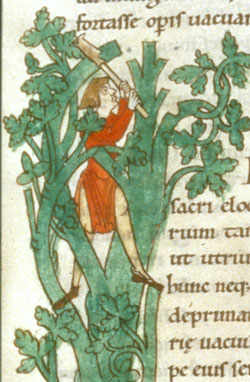 |
 |
 |
 |
 |
 |
 |
|
What precisely did the lay-brothers do? (5/14)
The lay-brothers were essentially brought in to manage the abbey granges, by cultivating the land and organising animal husbandry and a number worked within the abbey precinct. They included blacksmiths, bakers, weavers, masons, cobblers, skinners and tanners, for there was much to be done to sustain a self-sufficient community. There was food to be grown, stored and prepared, clothing, utensils and tools to be made, fences and buildings erected and maintained, and parchment prepared for manuscripts. The lay-brothers were effectively the economic backbone of the community and bore the lion’s share of the labour. While manual labour still formed part of the monks’ daily routine, with the exception of harvest time when they joined the lay-brothers to work in the fields, the monks were largely engaged with lighter tasks in and around the claustral area, such as working in the kitchen, greasing boots, tending the herb-garden and copying manuscripts. The lay-brothers’ duties often extended beyond the abbey precinct and the granges. They might accompany the abbot or another member of the community on a journey, travel to markets and fairs to buy or sell produce on the community’s behalf, negotiate with merchants – especially regarding the sale of the abbey’s wool - and mediate in other ways between the monastery and the outside world. |
||
